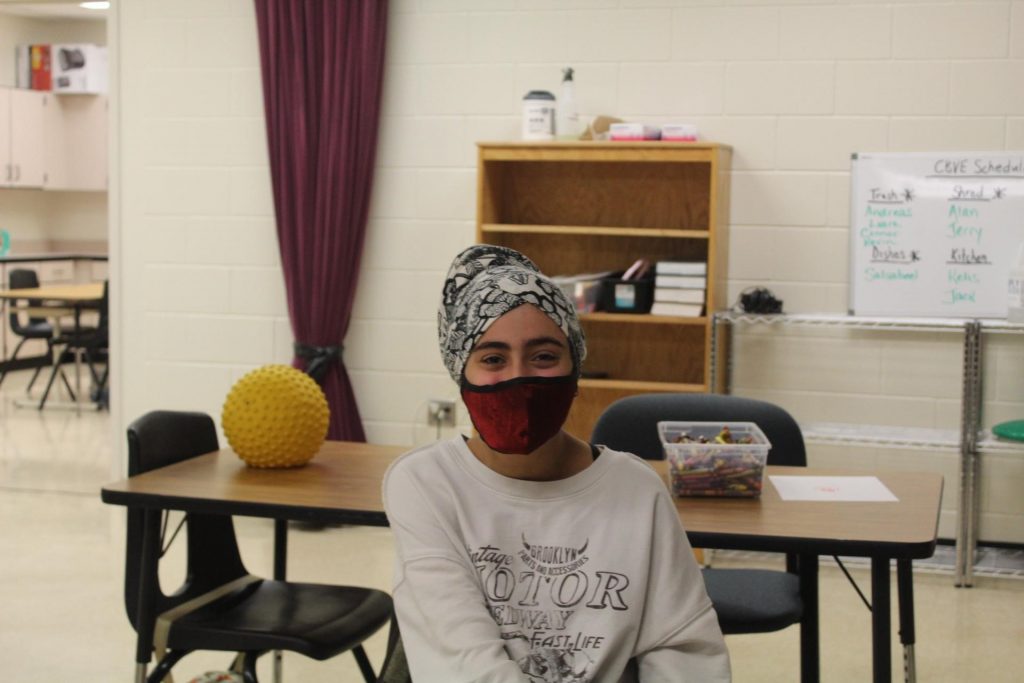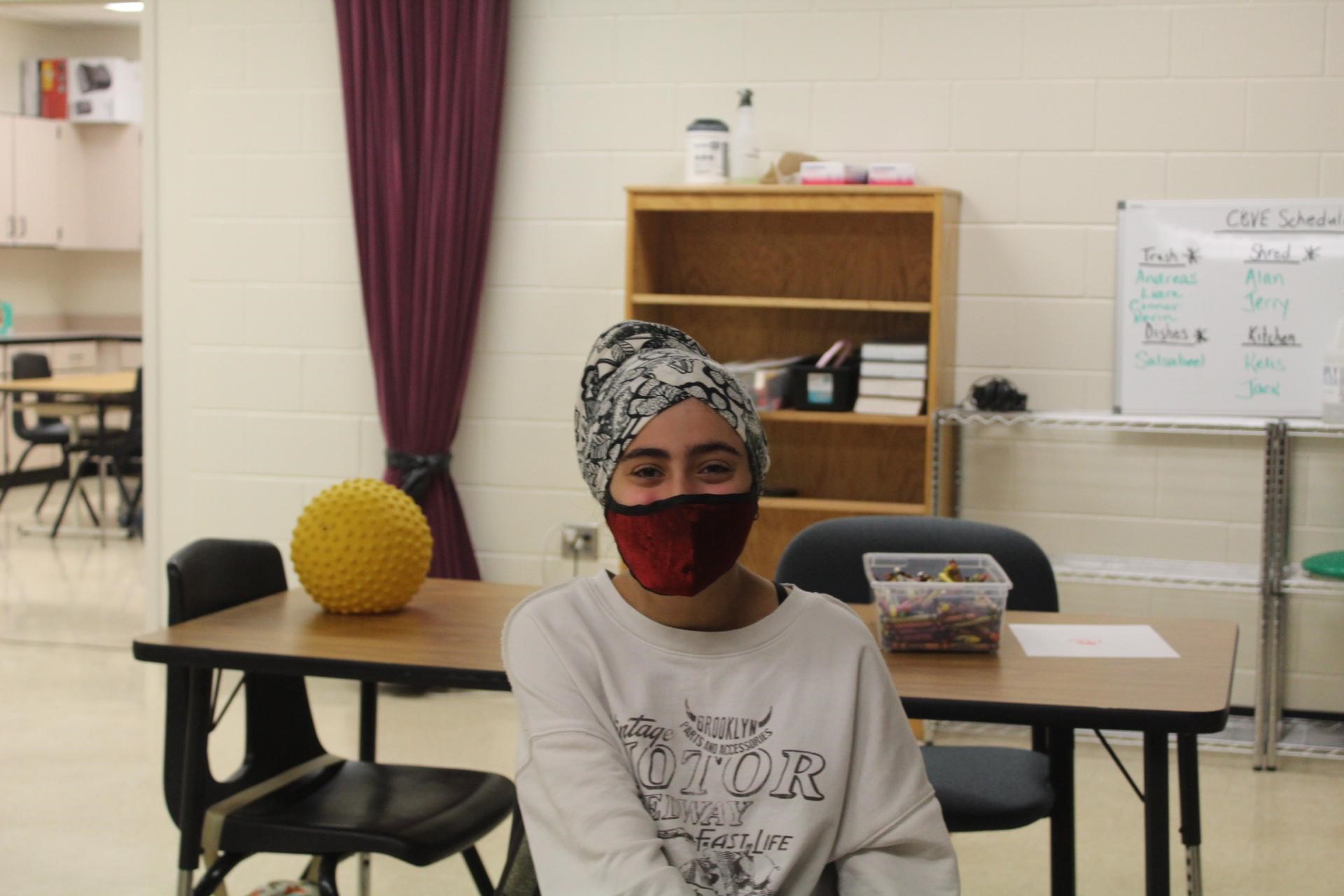A look at how the students with disabilities/special needs at TCHS learn and re-write the definition of what we consider to be a typical school day
By Sophia Ferrara
There are many schools in Orange County that have programs for exceptional education students, and Timber Creek is one of them. These programs are placed in schools to help students with disabilities to ensure that they have a safe, helpful, and comfortable learning environment like most neurotypical students (students without disabilities) do. The learning in these classrooms may consist of more unique or engaging methods and the students are often taught in different ways. This means that a regular day at school may look slightly different for them.
Connor Buckridge teaches in one of Timber Creek’s Access Points classes, and says that the technical term for the class as a whole is a “classroom for students with cognitive and physical disabilities.” This essentially means that students in this class have disabilities such as autism, down syndrome, etc. (any disability that more severely impairs cognitive function). Mr. Buckridge gave an in-depth explanation on the social and academic aspects of his class, and gave a little bit of insight on what things look like for his students as opposed to neurotypical students.
In high school Access Points classes, unlike most elementary and middle schools, more life skills, social skills, and job preparations are taught on top of academics. In fact, many juniors and seniors in the unit leave during the school day in order to practice working at a job off campus. Mr. Buckridge says that students can either work at Publix or Embassy Suites, and when they go they are taught different job skills and how to interact with customers. As for underclassmen, although they cannot work jobs off campus, in class they are taught different ways to socialize and interact with others (many times through working with PIT Crew students) as well as an assortment of skills that they will be able to use later in life. These skills (depending on the severity of the students’ disability) could range from how to take care of themselves to how to count out change when paying with cash.
One of the main things that sets Access Points classrooms apart is that, although all students that attend any school (neurotypical, disabled, or otherwise) are different, many students without cognitive disabilities are able to learn the same way as their like-minded peers. If these students are having trouble, they have the ability to voice their concerns or find/try other resources that may help them to be more successful. Students like those in Mr. Buckridge’s class would most likely struggle with learning if their instructors were to use many of the traditional teaching methods used on neurotypical students. Although this is the case, many of these students also have trouble doing things such as asking for help from their teachers or explaining that they would like to try a different approach to learning a specific subject or concept. This essentially means that although all the students are being taught the same concepts, they are all learning them in different ways. Each student may have a different set of goals in terms of behavior or academics, so everyone may be working on something individually. In other words, in Mr. Buckridge’s class, it is very unlikely that a student learns the same way or has the same skill set or individual goals as the one sitting next to them. It is made so that students that learn similarly might be put together so as to receive more one-on-one instruction or learn in small groups. Methods such as these are put in place to help with focus, retaining of information, etc. Of course there are also many students outside of Mr. Buckridge’s unit that have individualized learning plans, but this often means that their plans are aligned for a typical teacher to adhere to in a standard classroom. Students in the Access Points class have plans that are more specific or may require more resources/one-on-one time that a teacher who is not specially trained cannot give.
If we are speaking about high school in general, students in Access Points classes do not get much of the traditional “high school experience” when it comes to aspects such as changing classes or academics. However, they do get it in a social sense. This is because, although Mr. Buckridge’s students do not change classes 7 times a day, members of the PIT Crew class come in to help them with their work and many connections are made. This type of interaction is especially helpful considering a part of these students’ curriculum (regarding social aspects) is knowing how to react to certain situations and demonstrating the correct social skills based on the environment (essentially knowing how to do things like read a room). Prior to the pandemic it was an extremely common occurrence for Mr. Buckridge’s class to play games with PIT Crew students such as UNO and Monopoly or to build fun items with Legos. Mrs. Barron, another teacher for students with cognitive disabilities, says that COVID-19 has really, “put a dampener on their social scene.” However, it seems that, aside from this year being what it is, time with neurotypical students from PIT Crew and really having a program similar to that as a whole has made a very positive impact on the acceptance scale and tipped it toward inclusion and kindness. Mr. Buckridge says, “although it sounds cliche,” the idea of acceptance of students with disabilities really is getting “better and better everyday.” Not only that, he says, “everyone knows someone in PIT Crew,” meaning that many students have friends, teammates, siblings, etc. that take the class, and that this has led many more kids to be aware of the classroom and the students within it. This is undeniably something beneficial considering that so much of the time, awareness and acceptance coincide with one another.
As someone who has a sibling with disabilities, it is a very comforting thing to know that when high school comes around for him he’ll have the best time at Timber Creek. Not only will he have a classroom that meets his needs, he will be accepted by the other students around him. Through programs like PIT Crew, or even just having an Access Points unit on its campus, TCHS promotes the celebration of differences and the spread of knowledge of disabilities. If more schools continue to take these types of changes and implement these types of programs, we will be able to move forward and increase our community’s love, awareness, and acceptance.

